Discovering Chicago's Unique Cultural and Architectural Gems


Intro
Chicago, a city that embodies a vivid blend of cultures, traditions, and architectural marvels, has much more to offer than deep-dish pizza and stunning skyline vistas. From the bustling streets of Wicker Park to the serene lakesides of Hyde Park, every corner of Chicago tells a story worth unearthing. In this exploration, we aim to traverse the remarkable sites that define this vibrant metropolis. Whether you are a prospective homeowner, an architecture enthusiast, or simply an avid traveler looking for hidden gems, Chicago presents a remarkable tapestry of experiences and inspirations.
In this guide, we’ll dive into the architectural styles that give life to Chicago’s neighborhoods, uncovering unique homes that stand as icons of beauty and design. We also engage with the geographic highlights that shape the city's landscape and delve into the cultural significance surrounding its most cherished landmarks.
This exploration promises to illuminate not just the surface but the very essence of Chicago, showcasing the areas that capture the heart of its inhabitants and visitors alike.
To better frame our discussion, let's first consider the fascinating homes within Chicago.
Chicago's Architectural Landscape
Chicago's architectural landscape is a captivating blend of styles, eras, and philosophies. This uniqueness serves not only as a backdrop to the city’s vibrant life but also as a canvas illustrating the evolution of urban design and the cultural identities of its inhabitants. Significant structures dot the skyline, each telling stories of ambition, innovation, and resilience. From its towering skyscrapers that scrape the sky to historical buildings that whisper stories of the past, the city presents an architectural harmony that resonates with locals and visitors alike.
The emphasis on architectural diversity in Chicago allows for exploration beyond mere aesthetics. Each landmark introduces an opportunity to delve into historical contexts, cultural reflections, and economic impacts. For those considering real estate investments, understanding this architectural narrative becomes crucial, as it influences neighborhood desirability and market trends. Are potential buyers drawn to the sleek modernity of glass-clad towers, or do they prefer vintage charm steeped in history? This architectural landscape not only defines the identity of Chicago but also shapes its economic and sociocultural landscapes.
The Towering Skyscrapers
Willis Tower and Its Cultural Impact
The Willis Tower, long known as the Sears Tower, is not just a skyscraper; it’s an icon of Chicago. Standing as one of the tallest buildings in the Western Hemisphere, its cultural impact runs deep. Aside from offering stunning views from its observation deck, it represents an era of ambition and is often seen as a symbol of Chicago's resilience after the Great Fire of 1871. Its height and distinctive design make it a popular choice for tourists, drawing millions annually.
One unique feature of the Willis Tower is the Skydeck, equipped with glass boxes that allow visitors to step outside the building, a thrilling experience that showcases both courage and innovation. However, this draw is a double-edged sword; while it enhances tourist traffic, it can be overwhelming during peak times. Still, the Tower's influence extends to its role in shaping Chicago’s skyline and, consequently, its reputation as a global metropolis.
John Hancock Center: A Landmark of Design
The John Hancock Center is another standout in the Chicago skyline, recognized for its unique architecture, including its X-braced structure, which was a revolutionary design choice at the time of construction. It's more than just a building; it has become synonymous with the Chicago experience. From its 94th-floor observation deck,, visitors get jaw-dropping views of the city and Lake Michigan.
Adding to its allure is the changing layout of the building with its multi-use spaces that combine office, residential, and commercial features. However, its popularity comes with challenges. The observation area can get rather crowded, which might detract from the experience. Yet, for those considering investment, its location and iconic status make it a desirable spot in the real estate market, reflecting an upscale urban lifestyle.
Chicago Loop: The Financial Heartbeat
The Chicago Loop serves as the financial heart of the city, where tall buildings housing major corporations rise alongside historic architectural gems. Serving as a hub for business and commerce, the Loop is characterized by an energy that pulses through its streets. This dynamic blend of finance and culture creates an attractive space for both businesses and developers.
One notable characteristic of the Loop is its accessibility, with the CTA trains and buses making it easy to get to and from. This convenience is appealing for anyone looking into real estate opportunities, as commuters are often prompted to consider proximity to the Loop when searching for homes or investments. However, with the high demand comes elevated costs, and finding value in such a bustling area can prove challenging. Nonetheless, its significance as a center for commerce and culture solidifies its status in discussions about Chicago's architectural landscape.
Historical Buildings
The Chicago Water Tower: A Testament to Resilience
The Chicago Water Tower, one of the few structures to survive the Great Fire of 1871, stands as a testament to the city’s enduring spirit. Built in the Romanesque Revival style, it reflects the aspiration and determination of a city on the rise. Its importance transcends architecture; it symbolizes hope and resilience amidst destruction. For many, it is a must-see for anyone exploring Chicago's rich history.
The tower's unique limestone façade and distinctive design make it an easily recognizable landmark. For urban planners and designers, it underscores the significance of preserving history even while embracing modernity. However, while it draws tourists, the challenge remains to maintain its structural integrity in a bustling city, ensuring it persists as a symbol of perseverance in the face of adversity.
The Rookery Building: A Fusion of Styles
The Rookery Building is a brilliant example of architectural fusion, combining the influences of the Chicago School and later modifications by famous architect Frank Lloyd Wright. Its ornate ironwork and stunning central light court make it a fascinating visit for architecture aficionados. This iconic building is often highlighted in discussions about Chicago’s architectural evolution due to its historical significance and design innovations.
A unique feature of the Rookery is the atrium, with a glass and steel roof that invites natural light, creating a serene atmosphere amidst the city's hustle. However, while the building is celebrated for its beauty, maintaining such a historic site comes with costs and challenges, especially when it comes to renovations and modern updates. Yet, its presence continues to reiterate Chicago's narrative as a city that honors its past while actively engaging with the future.
Mythic Architecture of the Art Institute
The Art Institute of Chicago is not just an art repository; its architecture is a work of art in its own right. The building combines various architectural styles, creating a mythic presence rooted in Chicago's artistic legacy. Its iconic front steps and lion statues have become synonymous with Chicago culture itself, making it one of the most photographed sites in the city.
One can argue that the building’s design reflects the spirit of innovation characteristic of Chicago, with its vast collection offering a glimpse into the city's artistic ambition. However, access to its special exhibitions can be competitive due to high demand. Despite these challenges, the museum serves as a pivotal educational and cultural site, providing an invaluable resource for both tourists and residents.
Together, these landmarks and buildings sketch the larger narrative of Chicago as a city that seamlessly marries the old with the new, underscoring its diverse architectural landscape.
Cultural Districts Worth Exploring
Cultural districts in Chicago offer a kaleidoscope of experiences, reflecting the city's diverse heritage and creative spirit. Each area brings its own flavor, melding art, food, and local history into a rich tapestry that invites exploration. Understanding these districts not only enhances the appreciation of Chicago's vibrant culture but also provides insight into its evolution and ongoing narrative. By diving into the detailed dynamics of these neighborhoods, one can grasp the interconnectedness of its society, making it a treasure trove for both locals and visitors alike.
The Magnificent Mile
Retail and Dining Experiences
The Magnificent Mile stands as a beacon of shopping and culinary delights, attracting millions each year. This renowned stretch along Michigan Avenue is laden with shops ranging from luxury designer boutiques to flagship stores, making it a shopping paradise. Not simply a commercial hub, the Mile also features an array of dining options. From the gourmet to the casual, culinary establishments like The Cheesecake Factory and Portillo's offer choices that cater to various palates. The ambiance pulsates with energy, turning a simple meal into an experience.
One of the standout features is the seasonal outdoor dining, which permits patrons to take advantage of Chicago’s fair weather. A well-placed table can afford diners remarkable views of the skyline, enhancing the dining experience. However, this comes at a cost—prices can be steep in this area, and reservations are often required at the more popular spots.
Architectural Walk: A Visual Feast
Strolling along the Magnificent Mile is akin to walking through a living art gallery. The architectural styles are as varied as the shops they house, with modern skyscrapers juxtaposed against historic buildings. This dynamic blend represents a historical timeline, showcasing everything from the neoclassical design of the Wrigley Building to the sleek lines of the John Hancock Center. A walking tour of this area reveals not only aesthetic richness but also tells the story of Chicago's resilience and growth over the decades.
However, while the visual appeal is undeniable, navigating through the crowds can be overwhelming. Tourists often crowd the pathways, especially during peak seasons. Still, the short-term discomfort is outweighed by the long-lasting impressions these structures leave behind.
Seasonal Events and Festivals
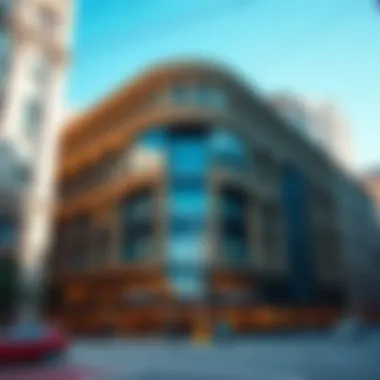
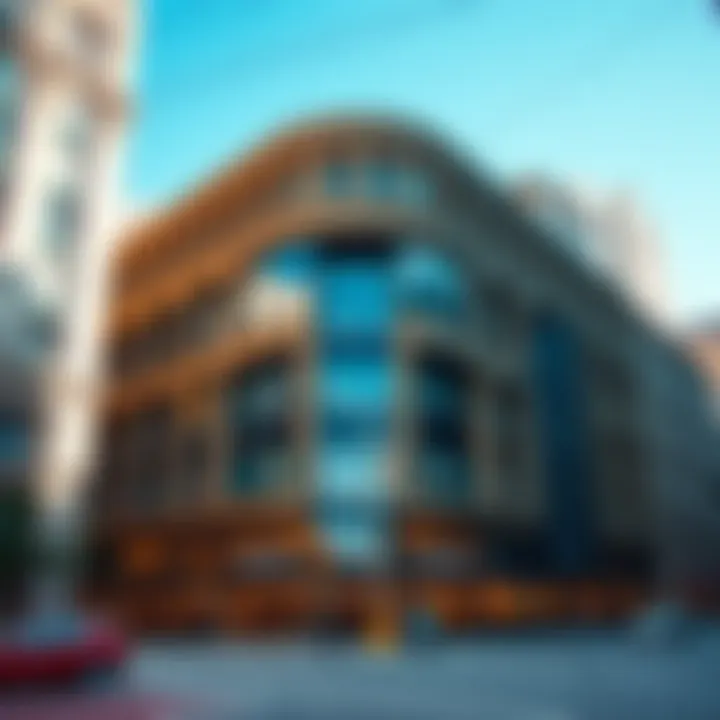
The Magnificent Mile is not just about shopping and architecture; it breathes life into the city with its seasonal events. Each year, festivals like the Magnificent Mile Lights Festival draw large crowds, celebrating the start of the holiday season. The event transforms the district into a festive wonderland, with elaborate light displays and performances that captivate visitors.
These events strengthen community ties, bringing together people from all walks of life. They highlight the importance of celebrating local culture, but they also come with increased traffic and limited access, which might deter some locals from venturing out. Nonetheless, the sense of camaraderie and collective joy during these festivities adds to the richness of the experience.
Wicker Park and Bucktown
An Artistic Haven
Wicker Park and Bucktown are synonymous with creativity and artistry. Once considered the underdogs of Chicago, these neighborhoods have blossomed into galleries of artistic expression. From independent art galleries to community art murals, the atmosphere is thick with inspiration. The presence of artists and creatives fosters a vibrant community that thrives on innovation and individuality.
This unique characteristic draws in visitors eager to explore unconventional works and engage with local artists. However, gentrification has altered parts of these areas, leading to rising costs that may displace some long-time residents, a point of contention among locals.
Independent Boutiques and Coffee Shops
Independent boutiques and artisanal coffee shops breathe life into the streets of Wicker Park and Bucktown. Shoppers will find an array of unique clothing, handmade goods, and one-of-a-kind artisanal products. Coffee shops like Intelligentsia not only serve quality brews but also double as meeting points for local creatives and entrepreneurs. This fosters an intimate sense of community while supporting local talent.
The charm of these establishments lies in their quirks and character, which larger chains often lack. However, they also face the challenge of keeping up with consumer trends amid competition from bigger brands. Nonetheless, their distinct offerings keep locals and tourists alike coming back for more.
Street Art and Mural Displays
Street art in Wicker Park and Bucktown is more than mere decoration; it is a vital form of expression. The walls are alive with murals that often have social or political messages embedded within them. They tell stories of identity and community, while also acting as a canvas for local artists to showcase their talents.
This characteristic of the neighborhoods turns a simple walk into a rich narrative journey, bringing life to the urban landscape. However, opinions on street art can be divisive—many celebrate its beauty, while others see it as vandalism. Yet, it undeniably adds a layer of depth and character that enhances the allure of these neighborhoods.
Green Spaces and Outdoor Areas
When one reflects upon the urban landscape of Chicago, it's easy to get lost in the towering skyscrapers and bustling city life. However, nestled within that concrete jungle are crucial green spaces and outdoor areas that provide not just beauty, but also a much-needed sense of tranquility and respite. These areas play a pivotal role in enhancing the quality of urban life, offering a breath of fresh air, both literally and metaphorically. As this article elaborates on the unique features of Chicago, the inclusion of green spaces emphasizes how this city embraces nature amidst urbanity, ensuring residents and visitors alike can find pockets of serenity.
Millennium Park: Urban Oasis
Crown Fountain: Interactive Art
At the heart of Millennium Park lies the Crown Fountain, a striking interactive art installation that serves a dual purpose: it’s both visually captivating and a refreshing splash zone during the scorching summer months. Rather than a typical fountain spitting water, this installation features two 50-foot glass brick towers that project the faces of local residents. It’s this interactivity—where the fountain seemingly
Historical Significance of Neighborhoods
The neighborhoods in Chicago represent the city's rich tapestry of culture, history, and transformation. Understanding their historical significance allows one to appreciate the layers of identity and change, as well as the impact of architectural styles, social movements, and cultural enclaves. Each neighborhood has a story to tell, molded by its people and events that shaped its current landscape. For those interested in Chicago's essence, exploring these neighborhoods encourages a deeper connection to the community and its heritage.
Hyde Park: Legacy of Education
The University of Chicago: A Scholarly Hub
The University of Chicago stands as a beacon of education in Hyde Park, priding itself on rigorous scholarship and research. Founded in 1890, it’s recognized for its influential faculty and alumni, including numerous Nobel laureates. It brings a unique flavor to the community, drawing students and academics from around the globe, thereby enriching Hyde Park’s cultural dynamics. The university’s Gothic architecture, notably the Harper Memorial Library, serves as a landmark that encapsulates the scholarly atmosphere. Visiting the campus reveals a commitment to learning, with open gardens and museums enhancing its appeal. The accessibility of such extensive resources makes this area a sought-after location for those interested in a robust educational environment.
Frank Lloyd Wright's Robie House
Frank Lloyd Wright’s Robie House is a masterpiece of the Prairie School movement, designed in 1910. This building is often regarded as one of Wright's most innovative residential designs. The cantilevered roof and open spaces exemplify the notion of harmony between the indoor and outdoor while highlighting functionalism in architecture. Situated just adjacent to the University of Chicago, it functions not only as a historical site but also as an educational tool. The house offers guided tours that delve into Wright’s design philosophy, making it a favored destination for architecture enthusiasts. While it underscores the importance of design, access can be limited due to high demand, necessitating prior arrangements for tours.
Sites of Civil Rights Heritage
Hyde Park is not just an academic hub; it's also a point of significant historical relevance regarding civil rights. Sites such as the DuSable Museum of African American History serve as crucial touchstones of the struggle for equality. The museum provides a comprehensive view of the African American experience, showcasing artifacts and exhibitions that illuminate the painful yet empowering journey towards equality. Its presence in the neighborhood enriches the historical understanding of civil rights. Additionally, events and discussions held at such venues draw attention to ongoing social justice issues, establishing Hyde Park as a vital arena for community engagement and activism.
Chinatown: Cultural Mosaic
Gastronomic Delights
Chinatown’s culinary landscape is a vibrant offering of authentic flavors and unique culinary experiences. The neighborhood is renowned for its diverse selection of eateries, from dim sum houses to specialty shops. Restaurants like MingHin Cuisine and Lao Sze Chuan provide a taste of the rich traditions embedded in Chinese culture. This gastronomic hub attracts food lovers keen on experiencing genuine Chinese cuisine, contributing to the overall allure of Chicago. Unique features, such as the annual Chinese New Year celebration, amplify its appeal, drawing crowds eager to indulge in festive treats. However, the increasing popularity can lead to longer wait times, particularly during peak dining hours.
Historical Landmarks
Chinatown boasts an array of historical landmarks that reflect its cultural heritage. The Chinatown Gate, elaborately designed and beautifully adorned, acts as a welcoming embrace for visitors. This arch, which signifies the neighborhood’s ethnic pride, enhances the district's identity. Additionally, the Chinese-American Museum and the Nine Dragon Wall serve poignant reminders of the contributions that Chinese immigrants have made to Chicago’s narrative. These landmarks not only tell stories of perseverance and cultural heritage but also attract tourists keen on exploring the city's diverse historical tapestry. Their significance often lies in their capacity to inspire respect for cultural legacies and shared histories amongst ethnic groups.
Festivals Celebrating Heritage
Cultural festivals in Chinatown serve as vibrant exhibits of heritage and community spirit. The annual Chinatown Summer Fair and the Chicago Dragon Boat Race create a lively atmosphere filled with activities, performances, and food. These festivals allow residents and visitors alike to engage with the rich traditions of the Chinese culture through music, dance, and culinary delights. They serve as platforms for cultural exchange and solidarity within the community. These events, while fostering cultural pride, can sometimes lead to overcrowding, which may detract from the experience for some visitors. Nevertheless, they immensely contribute to the cultural richness and vibrancy of the neighborhoods.
Art and Culture Institutions
Exploring Chicago's art and culture institutions brings to light the city's dedication to creativity and heritage. These places serve as epicenters of thought, where various expressions of human creativity and historical narratives come together. They become not only reservoirs of artistic achievements but also community hubs that foster understanding and discussion around diverse topics. For anyone considering the architectural marvels or the artistic trends in Chicago, the importance of these institutions cannot be overstated.
Art Institute of Chicago
Impressionist Collection
The Impressionist Collection at the Art Institute of Chicago is more than just a display of paintings; it's a journey through time and artistic revolution. Featuring works by masters like Claude Monet and Pierre-Auguste Renoir, this collection stands as a testament to the evolution of art itself. One standout characteristic is its diversity in styles and techniques, which allows visitors to engage deeply with the nuances of each artist's vision.
This collection is often described as a beneficial choice for art lovers visiting the city, as it includes pieces that have shaped Western art. The unique feature here is the intimate setting; many pieces are showcased in a way that allows close observation, letting you appreciate the brush strokes and colors in a way that photographs just cannot convey. Still, there could be a downside: the collection can attract large crowds, which might detract from the tranquil art-viewing experience the institute aims to provide.
Architectural Significance of the Building
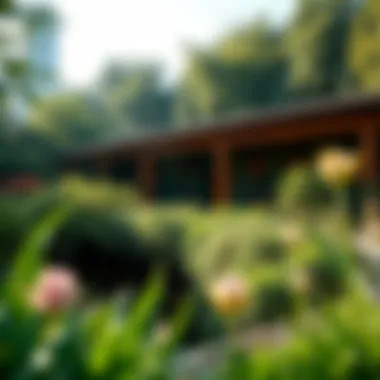
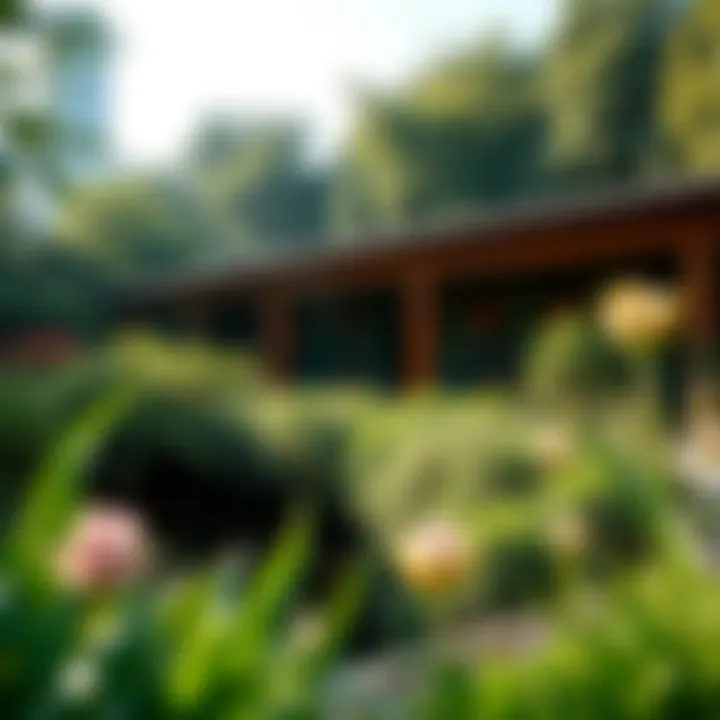
The Art Institute of Chicago’s architectural significance is noteworthy. Designed by the renowned architect Renzo Piano, the building itself is a work of art. The blending of the historical structure and modern additions reflects Chicago's commitment to preserving its past while embracing the future. This fusion of styles not only enhances the visitor's experience but also underscores the city’s narrative of resilience and transformation.
Choosing to visit this architectural gem is a popular option among tourists and locals alike because it embodies both historical integrity and contemporary innovation. A unique feature is its crown jewel, the bronze lion sculptures that frame the entrance, welcoming thousands of art enthusiasts each year. However, navigating the large space may be daunting for first-time visitors unfamiliar with the layout, requiring additional planning to fully appreciate all areas.
Temporary Exhibitions and Events
Temporary exhibitions and events provide a dynamic aspect to the Art Institute's offerings. These ever-changing displays introduce fresh themes, allowing the institution to stay vibrant and relevant. They're valuable in expanding the conventional narrative around art and often feature underrepresented artists who bring unique perspectives to the forefront.
These exhibitions are a beneficial draw for repeat visitors who wish to see something new each time they return. A unique feature is the ability to experience a wide range of artistic expressions, from multimedia installations to interactive pieces, creating a dialogue between artists and the public. However, it is worth noting that some exhibitions may require advance tickets, which can create a sense of urgency that might not align with a leisurely visit.
The Field Museum
History and Science Exhibits
The Field Museum serves as a treasure trove of history and science exhibits, merging education with curiosity. Its extensive collection, including artifacts from ancient civilizations and fascinating displays of natural history, offers an immersive experience that appeals to individuals of all ages. This museum is a pivotal piece of Chicago’s cultural puzzle, inviting visitors to connect with the past while contemplating the future.
This institution stands out for its significant dedication to education, making it a great choice for families and school groups alike. The unique feature of the Field Museum is its famous dinosaur exhibits, such as Sue, the largest and most complete Tyrannosaurus rex ever discovered, which never fails to impress. However, navigating the expansive layout can sometimes become overwhelming, especially during busy periods.
Preservation of Native Cultures
One of the Field Museum’s core missions is the preservation of Native cultures. Through thoughtful curation, it offers insights into the richly varied traditions and histories of Indigenous peoples from around the globe. Exhibits focus on authentic storytelling and the nuances of culture, which provide a rare window into the lives and practices of those often overlooked by mainstream narratives.
This focus on history is a valuable aspect of the museum, highlighting the importance of cultural preservation in an increasingly globalized world. A unique feature is the inclusion of voices from community representatives as part of the exhibits, ensuring a respectful representation of their cultures. However, one challenge can be the varied interpretations visitors may have, depending on their previous knowledge of such cultures.
Educational Workshop Opportunities
The Field Museum also offers a range of educational workshop opportunities, which emphasize hands-on learning and engagement. These programs cater to all ages, allowing individuals to delve deeper into specific topics related to history, science, and culture. Educational workshops are a great draw for schools and community groups, providing an interactive approach that complements the exhibits.
The unique feature of these workshops is their ability to adapt to different learning styles, making them accessible and engaging. However, spots in these programs can fill up quickly, necessitating early reservations, which may not be ideal for spontaneous visitors.
In summary, both the Art Institute of Chicago and the Field Museum serve not just as places to view art or artifacts but as crucial platforms for learning and cultural exchange. Chicago's art and culture institutions represent the lifeblood of its creative landscape, encouraging exploration, connection, and appreciation of the rich tapestry woven throughout this remarkable city.
Culinary Highlights Across the City
In a vibrant city like Chicago, where every street corner has a story, culinary highlights play a crucial role in defining the urban landscape. The rich tapestry of flavors and ever-evolving dining scenes showcase not just traditional favorites, but the dynamic interactions of cultures, making this section indispensable for anyone wishing to grasp the essence of the city's lifestyle. With deep-dish pizza and a smorgasbord of restaurants representing global cuisines, food is intertwined with the identity of the city. This section dives into the gastronomic gems that not only satisfy the palate but also depict the cultural narratives of Chicago.
Deep-Dish Pizza: A Chicago Staple
Deep-dish pizza stands tall as one of Chicago’s most iconic culinary offerings. Characterized by its thick crust and generous layers of cheese and toppings, this pizza is regarded by many as comfort food that’s hearty enough to share but often devoured solo. Beyond its unique design, what makes deep-dish truly special is the history behind it; pizzerias like Lou Malnati's, Giordano's, and Pequod's are as much a part of the city’s fabric as the skyline itself.
Iconic Pizzerias and Their Stories
Lou Malnati's has craft its reputation for over four decades, telling a tale of family recipes passed down through generations. Its buttery crust has captivated locals and tourists alike, turning it into a rite of passage for newcomers. Meanwhile, Pequod's, with its famed caramelized crust, offers a different yet equally delicious experience. The stories behind these pizzerias reveal their contributions to not just food, but also Chicago's cultural identity, crafting memories for families and individuals alike, thus making them beloved dining establishments.
Variations and Influences on Pizza Culture
As the love for deep-dish grows, several pizzerias have ventured into creative waters, sparking variations like stuffed deep-dish and even vegan options. This evolution signifies Chicago’s defense against the monotony of culinary tradition. The constant innovation nurtured by both locals and visiting chefs contributes to a diverse pizza culture deeply rooted in the city. The influence of food trucks and pop-up kitchens has also encouraged experimentation, making for an exciting and ever-changing landscape of options for those looking to experience Chicago's pizza scene from several angles.
Locally Sourced Ingredients
Using locally sourced ingredients is fundamental to the pizza conversation, especially in a hub known for its focus on sustainability and community support. The commitment of pizzerias to incorporate fresh produce from Illinois farms not only enhances the quality of the dishes served but also bolsters the local economy. With an emphasis on flavor that reflects the season, pizzas become more than just comfort food; they transform into expressions of the land and climate, showcasing the equilibrium between meticulous sourcing and culinary artistry.
Diverse Gastronomy
Beyond deep-dish, Chicago brims with culinary diversity, offering a veritable feast that caters to all palates. The city's neighborhoods are teeming with eateries that serve authentic ethnic cuisines, providing a glimpse into the melting pot that Chicago truly is.
Ethnic Flavors in the Heart of the City
Chicago's neighborhoods, such as the ones around Argyle Street for Vietnamese fare and Devon Avenue known for Indian cuisine, are gateways to experiencing ethnic flavors. The vibrant offerings reflect the rich cultural heritage brought over by immigrant communities, creating opportunities for diners to indulge in dishes that come with authentic stories. These flavors and aromas not only tantalize taste buds but foster a palpable sense of connection among communities.
Famous Food Festivals
Food festivals such as Chicago Gourmet and the Chicago Pizza Summit elevate the city’s culinary scene annually. These events provide platforms to showcase local chefs and restaurateurs while emphasizing seasonal ingredients and unique cooking styles. While these festivals offer a taste of many cuisines, they also help build community through shared meals and celebrations, reinforcing Chicago’s reputation as a top food destination.
Trends in Contemporary Dining
In recent years, there has been a noticeable shift towards simpler, more sustainable dining options. Trends such as farm-to-table, food as an experience, and authentic cultural showcases have started making waves. Chicago’s chefs are experimenting with techniques that range from molecular gastronomy to traditional cooking methods, drawing inspiration from both local and global influences. This evolving landscape in contemporary dining represents not just a change in food preference but a broader cultural journey – one that reflects societal shifts in ethics, lifestyle, and community values.
Unique Shopping Districts
When delving into the bustling metropolis of Chicago, Unique Shopping Districts reveal themselves as vibrant microcosms of culture and life. These districts offer not just a chance to shop but also an opportunity to engage with the city's diverse heritage. They combine a rich historical background with contemporary flair, giving both residents and visitors a taste of what the city has to offer. From the nostalgia of historic department stores to trendy boutiques, the shopping experience in Chicago tells a story that transcends mere commerce. Each district welcomes you with its own flavor, allowing one to uncover the many layers that contribute to the city's unique character.
State Street: Retail Classics
Impact of Historic Department Stores
State Street has long been a cornerstone of Chicago’s retail history. The impact of its historic department stores is profound. Places like the former Marshall Field’s (now Macy’s) embody an era of opulence and customer service that shaped how shopping is perceived today. This historic department store was known for its remarkable displays that not only attracted shoppers but also created a community space where people gathered to enjoy the ambiance.
A key characteristic of these department stores is their architectural grandeur. The elaborate facades and interiors often reflect the artistic sensibilities of their respective eras, integrating elegance into the shopping experience. It's not merely about purchasing goods; it’s about stepping into a veritable museum of retail where the journey is equally gratifying as the destination.
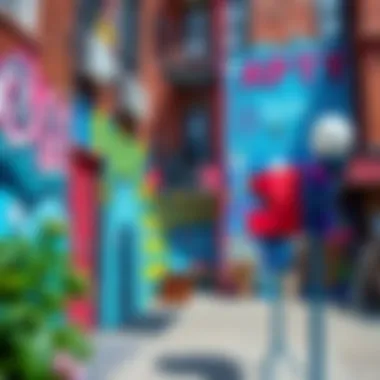
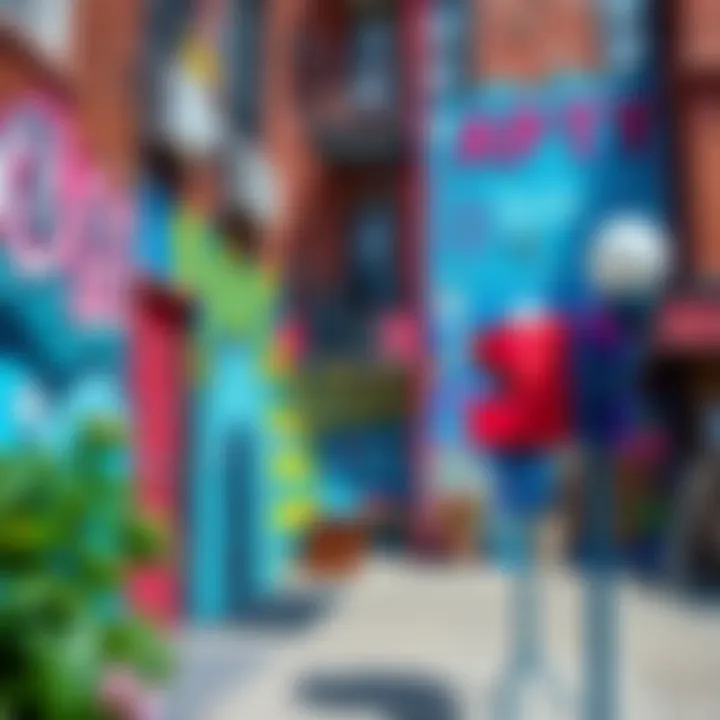
Nevertheless, there are considerations; while they provide a nostalgic glimpse into the past, some of these stores have adapted poorly to the fast-paced world of e-commerce, leading to question marks about their future.
Shopping Environment and Cultural Influence
The Shopping Environment and Cultural Influence of State Street is a tapestry of sights, sounds, and aromas that encapsulates the essence of Chicago. As you walk down the street, you’re enveloped by a mix of historical significance and modern-day vibrancy that kindles excitement.
A defining trait of this environment is its accessibility to all kinds of shoppers. This inclusive setting fosters a sense of community as diverse groups converge in this lively area. The cultural influence is palpable, with street performers and local events breathing life into the everyday shopping experience.
However, this bustling atmosphere can sometimes be overwhelming for those seeking a quieter shopping spree. The heavy visitations may lead to a compromise in the shopping experience, but for many, the vibrant energy is simply unmatched.
Architectural Significance of Storefronts
The Architectural Significance of Storefronts along State Street cannot be overstated. Each storefront embodies a unique aesthetic that contributes to the historical narrative of the area. The grand columns and intricate details serve as landmarks, reminding visitors of the city’s rich legacy in commerce and design.
A celebrated feature is the blend of various architectural styles that can be spotted from one end to the other. While modern buildings offer sleek lines and functionality, older storefronts exude a charm that is hard to replicate. This juxtaposition provides a visual feast for both casual visitors and architecture aficionados alike.
However, it is crucial to acknowledge the challenges; as urban spaces evolve, the preservation of these architectural marvels competes with the push for modern development. Striking a balance between maintaining historical integrity and accommodating growth is an ongoing dialogue.
The West Loop: Chic and Trendy
High-End Boutiques
Stepping into the West Loop introduces one to a realm of High-End Boutiques that redefine luxury shopping in the city. This area has gained a reputation as a shopping haven for those with discerning tastes, featuring both established brands and emerging designers. These boutiques often prioritize unique craftsmanship over mass production, presenting customers with exquisite selections that tell a distinct story.
A striking characteristic of these boutiques is their focus on personalization and exclusivity. Shoppers here benefit from individualized attention that transforms their experience into something more than just a transaction; it’s about building relationships. Yet, the allure of high prices can pose a barrier for some, limiting access to a broader audience.
Art Galleries and Studio Spaces
The West Loop also houses a plethora of Art Galleries and Studio Spaces, making it a cultural as well as a commercial hotspot. This aspect contributes significantly to the overall identity of the area, attracting artists and art lovers alike. These spaces are often dynamic, hosting exhibitions showcasing local talents and fostering community engagement through art.
A key point of interest is how these art venues integrate the viewing experience with shopping. Visitors are invited not only to admire artwork but also to purchase pieces that resonate with them emotionally. This intersection brings a unique flavor to the shopping experience, though it may not cater to traditional shoppers who seek more conventional retail options.
Local Markets and Community Events
Local Markets and Community Events serve as a cornerstone of the cultural fabric of the West Loop. These gatherings invite residents and visitors to dive deep into local produce, crafts, and artisanal goods. This thriving market scene fuels community interaction and offers a rich selection of goods that reflect the area's creativity.
A distinct highlight of these events is their communal spirit, as they encourage local vendors and shoppers to forge connections. Whether it’s grabbing fresh produce or handmade items, the experience is enriched by a shared sense of belonging. On the flip side, such events can sometimes lead to overcrowding, which might detract from the shopping experience for those who prefer a quieter atmosphere.
Transportation Connectivity in Chicago
Transportation connectivity is a fundamental aspect of Chicago’s infrastructure that merits thorough exploration. This city, laid out like a well-crafted puzzle, becomes more accessible through its intricate transit systems. With a robust public transportation network and a burgeoning biking culture, Chicago effortlessly links its distinct neighborhoods and attractions, making travel a breeze for residents and visitors alike. Understanding how these systems intermingle can help demystify the city's layout and encourage exploration beyond the common tourist paths.
Public Transit Systems
Public transit in Chicago can be likened to the nervous system of the city. The Chicago Transit Authority, often referred to as CTA, operates the heartbeat of urban mobility through its extensive system of buses and trains. This network not only facilitates daily commutes but also allows tourists to navigate with relative ease.
Chicago Transit Authority: Buses and Trains
The CTA’s buses and trains are vital conduits for movement across the Windy City. One of the standout features of this system is the seamless integration of buses with the El train lines. With over 1,800 buses servicing various routes and multiple train lines crisscrossing through the city, it's no wonder that CTA is considered a popular choice for getting around.
Few things are as iconic as riding the El, especially above the city streets, offering an unobstructed view of Chicago’s architectural marvels. While the CTA can be impacted by delays, it remains a dependable way to traverse the city without the headache of traffic jams and parking woes.
Accessibility for Visitors and Residents
Accessibility plays a key role in the design and operation of CTA services. Stations are predominantly equipped with elevators and ramps, ensuring that everyone, including individuals with disabilities, can easily access them. The beauty of the system lies in its user-friendly features, allowing visitors to hop on a train or bus with relative confidence.
However, it’s important to bear in mind that while CTA is progressively improving accessibility, some older stations may still pose challenges. Still, the overall commitment to accessibility makes traveling through the popular sites of Chicago much simpler.
Future Developments and Innovations
As Chicago looks toward the future, transportation initiatives are emerging that promise to enhance connectivity even further. The CTA is actively exploring modern technologies such as mobile ticketing apps and real-time tracking systems that could make transit not only more convenient but also more efficient.
This forward-thinking approach will help ease congestion and improve overall travel experiences in the city. However, as with any development, some concerns about funding and implementation timelines have been raised. Nonetheless, the City's ambitions illustrate a commitment to modernizing its transport landscape to meet the needs of its growing population.
Biking Infrastructure
Biking is another essential element in Chicago’s transportation equation, bursting forth as a viable alternative for both locals and visitors. The city has diligently invested in creating a biking-friendly environment, with dedicated bike lanes that intertwine through urban landscapes.
Dedicated Bike Lanes
One key aspect of biking in Chicago is the dedicated bike lanes that have sprouted across various neighborhoods. These lanes provide a safe route for cyclists away from the bustling traffic, promoting an active lifestyle and a cleaner environment. The lanes connect parks, recreational spots, and essential urban centers, making them a very attractive option for commuting.
However, not all bike lanes are created equal. There can be concerns about visibility and maintenance, leading to uneven levels of comfort for riders in different areas. Regardless, the growth of these lanes reflects a positive trend towards cycling as a mainstream mode of transportation.
Bike-Share Programs
Bike-share programs, like Divvy, have expanded dramatically and play a significant role in promoting cycling within the city. Their convenience allows individuals to rent bikes on a short-term basis, making it easy to explore without the commitment of bike ownership. This not only supports tourists wanting to see the city up close, but it also encourages residents to adopt cycling habits.
While bike-share programs are generally well-received, the challenge remains in ensuring bikes are available in high-demand areas. Still, the availability of these bikes provides a distinct advantage for those looking to avoid traditional public transport.
Promoting Sustainable Travel
Sustainable travel is more than just a trend; it’s a movement emerging strongly within the Chicago transportation landscape. The focus on biking and public transit melds well with efforts to decrease carbon footprints and promote healthier lifestyles among citizens. By encouraging cycling and utilizing public transport instead of personal vehicles, the city contributes to creating healthier air quality and reduced traffic congestion.
This growing awareness of environmental impact reflects a shift in public attitudes towards transportation. Achieving these goals won’t be instantaneous, but Chicago’s commitment to sustainability hints toward a greener future.















